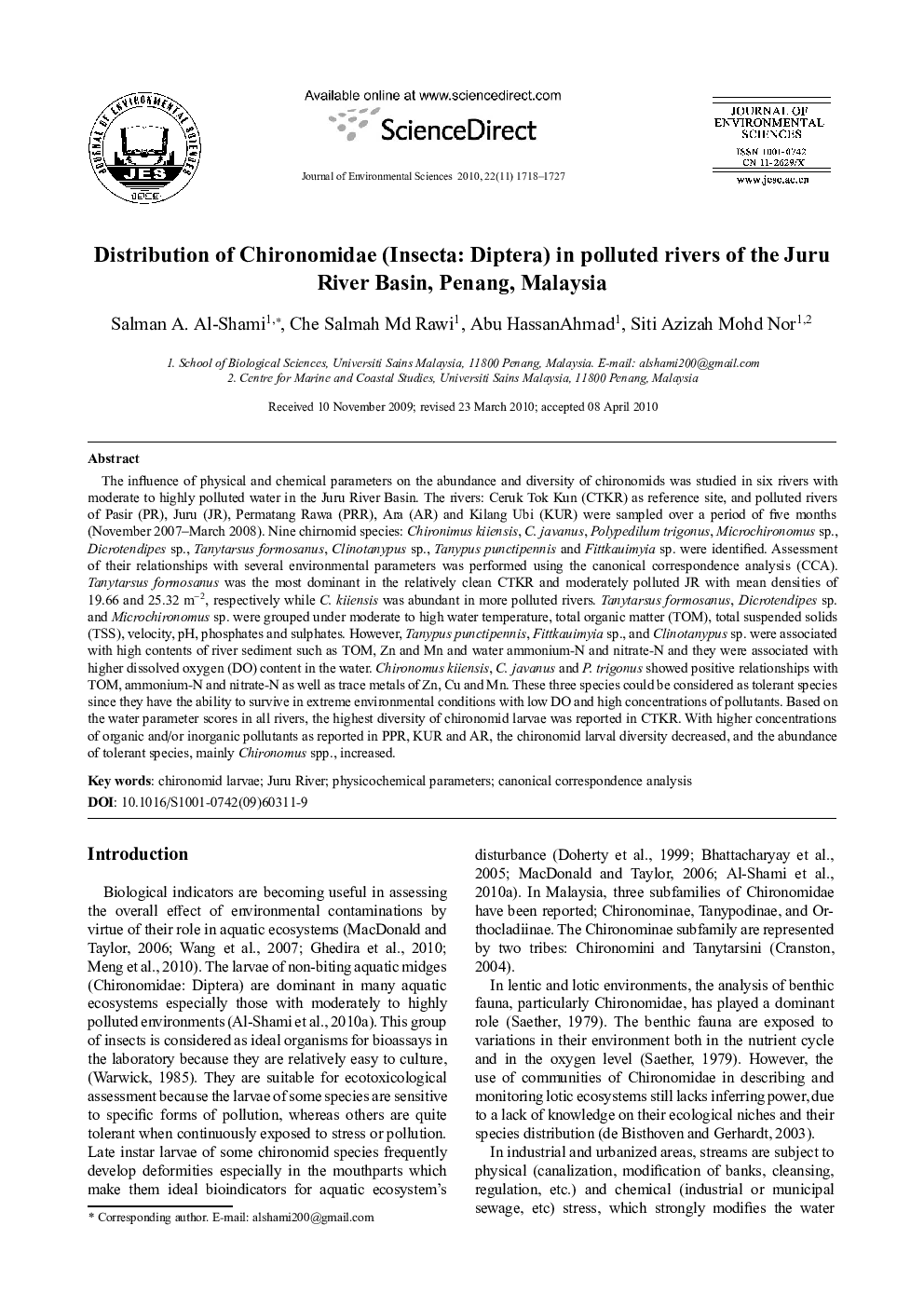| کد مقاله | کد نشریه | سال انتشار | مقاله انگلیسی | نسخه تمام متن |
|---|---|---|---|---|
| 4455107 | 1312505 | 2010 | 10 صفحه PDF | دانلود رایگان |

The influence of physical and chemical parameters on the abundance and diversity of chironomids was studied in six rivers with moderate to highly polluted water in the Juru River Basin. The rivers: Ceruk Tok Kun (CTKR) as reference site, and polluted rivers of Pasir (PR), Juru (JR), Permatang Rawa (PRR), Ara (AR) and Kilang Ubi (KUR) were sampled over a period of five months (November 2007-March 2008). Nine chirnomid species: Chironimus kiiensis, C. javanus, Polypedilum trigonus, Microchironomus sp., Dicrotendipes sp., Tanytarsus formosanus, Clinotanypus sp., Tanypus punctipennis and Fittkauimyia sp. were identified. Assessment of their relationships with several environmental parameters was performed using the canonical correspondence analysis (CCA). Tanytarsus formosanus was the most dominant in the relatively clean CTKR and moderately polluted JR with mean densities of 19.66 and 25.32 m−2, respectively while C. kiiensis was abundant in more polluted rivers. Tanytarsus formosanus, Dicrotendipes sp. and Microchironomus sp. were grouped under moderate to high water temperature, total organic matter (TOM), total suspended solids (TSS), velocity, pH, phosphates and sulphates. However, Tanypus punctipennis, Fittkauimyia sp., and Clinotanypus sp. were associated with high contents of river sediment such as TOM, Zn and Mn and water ammonium-N and nitrate-N and they were associated with higher dissolved oxygen (DO) content in the water. Chironomus kiiensis, C. javanus and P. trigonus showed positive relationships with TOM, ammonium-N and nitrate-N as well as trace metals of Zn, Cu and Mn. These three species could be considered as tolerant species since they have the ability to survive in extreme environmental conditions with low DO and high concentrations of pollutants. Based on the water parameter scores in all rivers, the highest diversity of chironomid larvae was reported in CTKR. With higher concentrations of organic and/or inorganic pollutants as reported in PPR, KUR and AR, the chironomid larval diversity decreased, and the abundance of tolerant species, mainly Chironomus spp., increased.
Journal: Journal of Environmental Sciences - Volume 22, Issue 11, November 2010, Pages 1718-1727